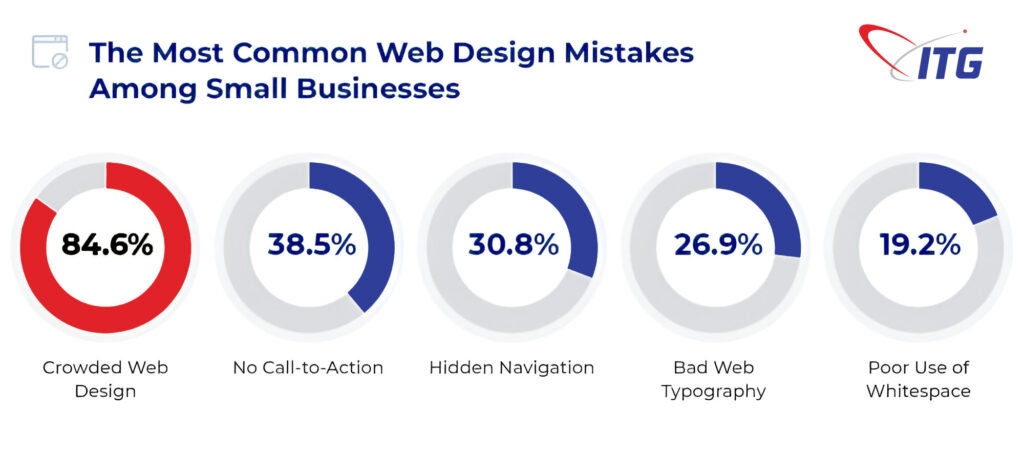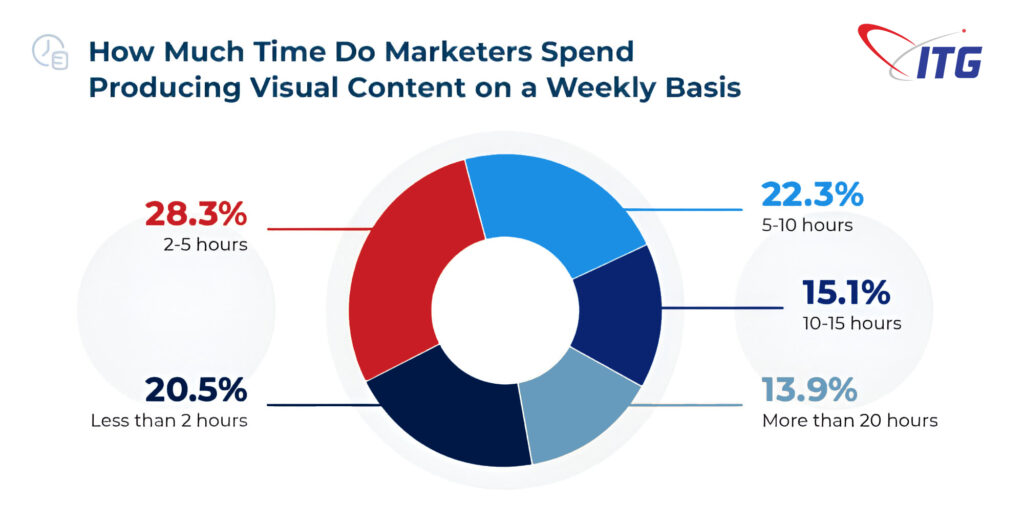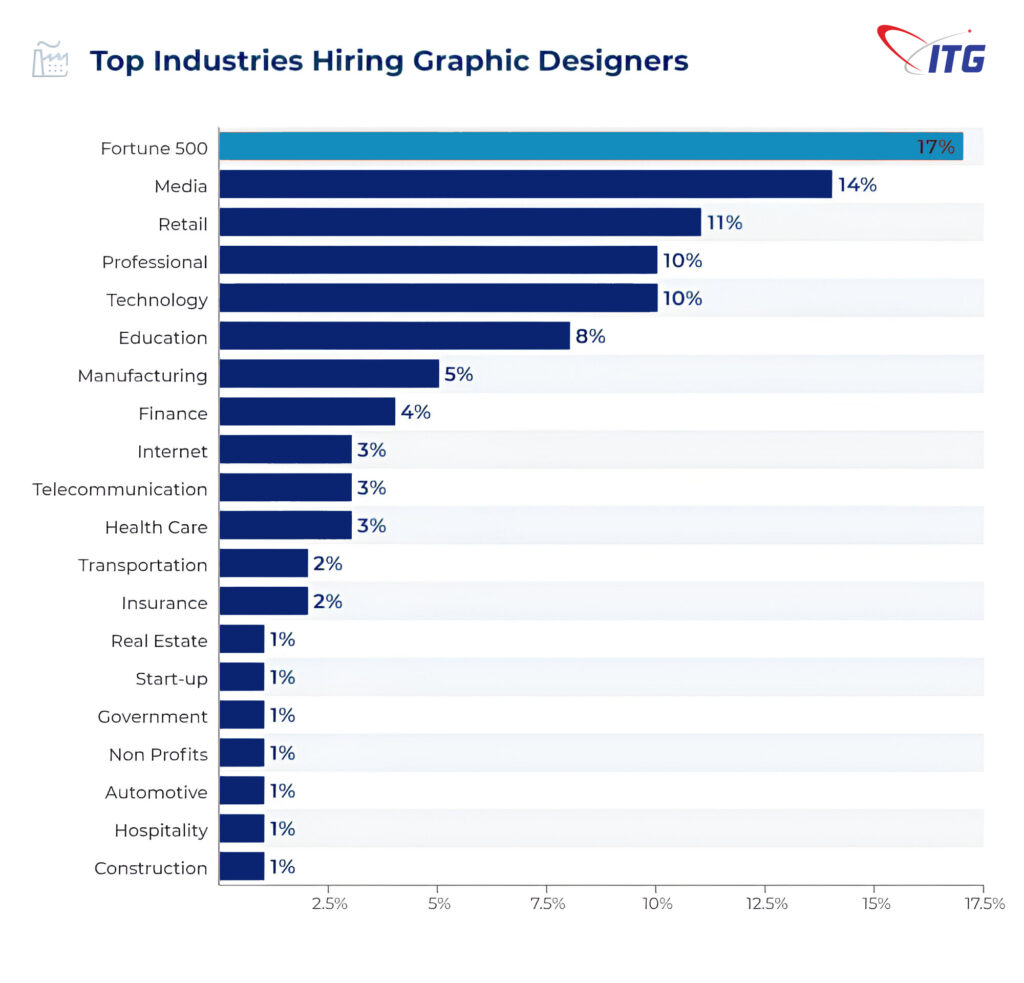The graphic design industry has experienced significant transformation in the past few years, much like many other sectors. As a result of the industry’s fast digitization, graphic design is growing in popularity. In order to keep you informed about developments in the business, the graphic artist at ITG has put together some crucial graphic design data. Learn what they entail for your company as well as what graphic artists have been up to since the epidemic compelled them to work from home instead of the workplace.
Statistics For Graphic Design By A Graphic Artist
- There is a $43.4 billion global market for graphic design services.
- $13.3 billion is the estimated value of the US graphic design market.
- New positions as designers become available 23,900 times a year.
- A quarter of graphic artists work for less than a year at a time.
- With a bachelor’s degree, 68% of graphic artists work.
- The hourly wage for freelance graphic designers ranges from $20 to $150.
- 94% of visitors will abandon a website with poor design.
Broad Statistics & Facts About Graphic Design

1. We communicate visually 93% of the time.
Visual clues are processed by our brains more quickly than words. The reason behind the worse performance of text-based content is its visual component. Statistics indicate that a trademark hue increases brand awareness by 80%, thus colors play a big role in this equation.
2. A brand’s revenues can go up by 33% with consistent visual design.
Graphic design data indicate that presenting a brand consistently via design may increase sales by 33%. This should come as no surprise, as between three and seven percent of customers believe that packaging design influences their purchasing decisions.
3. A company’s website design influences how credible they are rated by 75% of customers.
The secret to attracting and keeping customers is building trust, and as many as 94% of users say that a website with subpar design would make them doubt it. Sales are affected by this, which also affects traffic.
4. According to statistics on website visual design, 85% of small businesses make their websites unusable by packing too much content on them.
Other no-nos in website visual design include the absence of a call-to-action (a mistake committed by 38.5% of SMBs), concealed navigation (30.8%), and poor online typography (26.9%). The top five are rounded off by poor usage of whitespace at 19.2%.

5. Eighty percent of small enterprises value graphic design highly.
If the website’s design is poor, 94% of users will quit. Consumers have just 6.8 seconds to make an impression; graphic design data suggest that a well-designed design may extend that time by 50 milliseconds.
6. Approximately 50% of content developers create visual material in less than 5 hours each week.
You could be able to do more work in other areas of your life by outsourcing graphic design services. A significant 29% of respondents said they had been generating visual material for more than 20 hours, compared to 22% who said they had been doing so for between five and ten hours.

7. Because of the epidemic, 56.6% of businesses had to alter their approach to visual material.
For 56.6% of firms, the change to digital and virtual was a necessary one that resulted in new approaches to visual design and content development. As for 43.4%, they said the previous tactics were still effective and did not require significant adaptation.
Statistics About The Graphic Design Industry By Graphic Artist.

8. The current valuation of the worldwide graphic design sector is $43.4 billion.
According to industry figures, growth is expected to reach 3.7% by 2024. However, during the last five years, the market has lagged the global economy, rising by an average of 0.6% each year since 2017.
9. The graphic design industry in the United States is valued $13.3 billion.
As of right now, the US graphic design industry is valued at $13.3 billion, and a graphic artist at ITG predicts that it will expand by 1.9% by 2024. The average annual growth rate of 1.2% between 2017 and 2022 beats the worldwide designer market but is in line with the global trend of slower development than other industries overall.
10. In 2020, COVID-19 may cause the US graphic design sector to contract by around 15%.
Data from 2020 indicates that the potential decline in the graphic design sector might reach 14.8%, however, the whole impact of the worldwide pandemic on different businesses has not yet been determined. The need for graphic designers is expected to increase, though, as firms seek to capitalize on anticipated increases in consumer spending. This is one of the fascinating facts about graphic design.
11. The average hourly wage for graphic artists in the US is $25.66.
In 2020, the number of enterprises engaged in graphic design was 400,258. 2020 saw an hourly average of $25.66 and an annual median pay of $53,380. Ten percent of the highest-paid graphic artists earn around $77,000, while the worst ten percent earn less than $27,000. In contrast, graphic design statistics about the profession state that freelance graphic designers make between $20 and $150 per hour.
12. In the next ten years, there will be a 3% increase in the employment rate for graphic designers.
In contrast to other vocations, the demand for graphic artists is expected to expand at a slower rate between 2020 and 2030—by 3%. Since some designers leave or change careers, there are around 23,900 positions that become available annually as new designers join the workforce.
13. Within a year, there is a 24% turnover rate for a graphic artist.
There is no denying the rapid change in the field of graphic design. Among designers, turnover is high: 24% of them leave their positions during the first year, 30% leave within the first two years, 12% leave within the third to fourth year, 15% leave within the fifth to seventh year, and just 7% remain within the eighth to tenth year. But the number of graphic artists who have worked for more than 11 years is higher—12%.

14. Approximately 17% of designers are employed by Fortune 500 organizations.
Businesses with the biggest graphic design workforces are primarily comprised of the following five categories:
- Media 14%
- Retail 11%
- Professional 10%
- Technology 10%
- Education 8%.

In Conclusion
Though the epidemic may have impeded industrial expansion, images are still important to both consumers and enterprises. According to graphic design statistics provided by a graphic artist at ITG, there will be intense competition for jobs in the sector. As a result, designers must advance to remain relevant in light of the ongoing trend toward digitization in all spheres of life. The team of graphic artists at ITG is professional when it comes to making your website appealing for your customers and clients. Our extensive experience in the field has given fruitful results to our clients.
Farah Jawed Khan
Content Writer | Digital Marketer
I have been doing content writing since 2019. I have covered a vast area of services and products like IT, Fashion, Law, Business Coaching, Automobile, and the list goes on.




